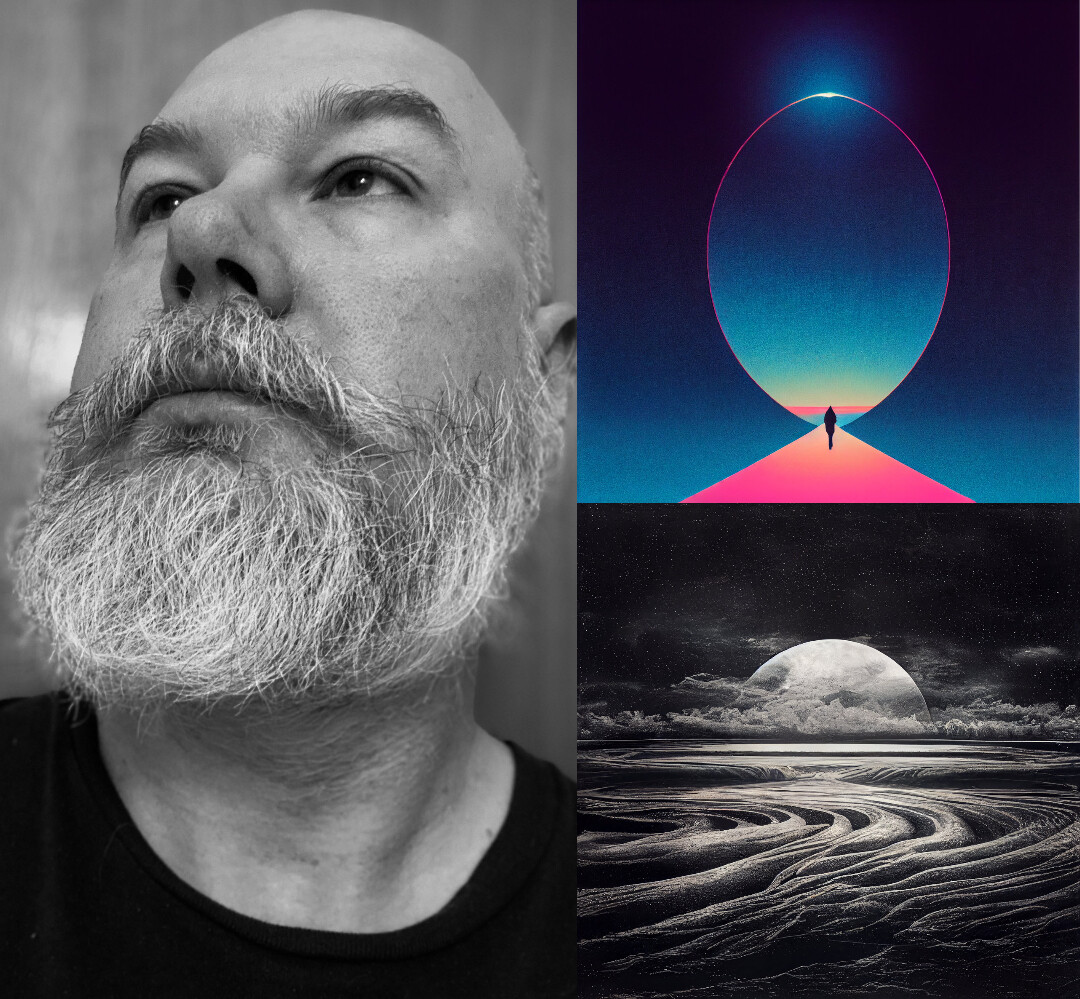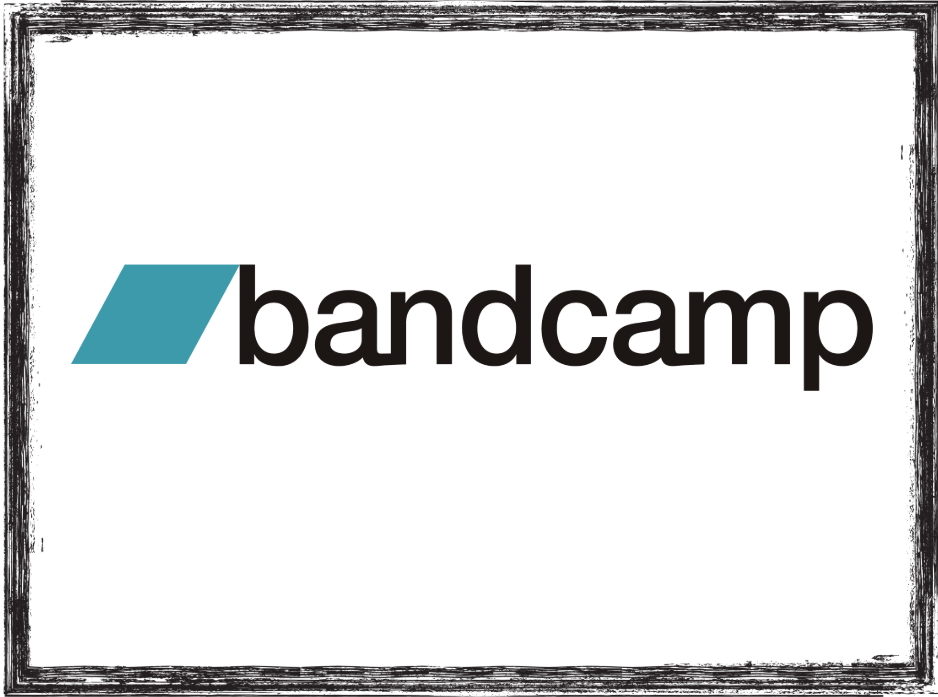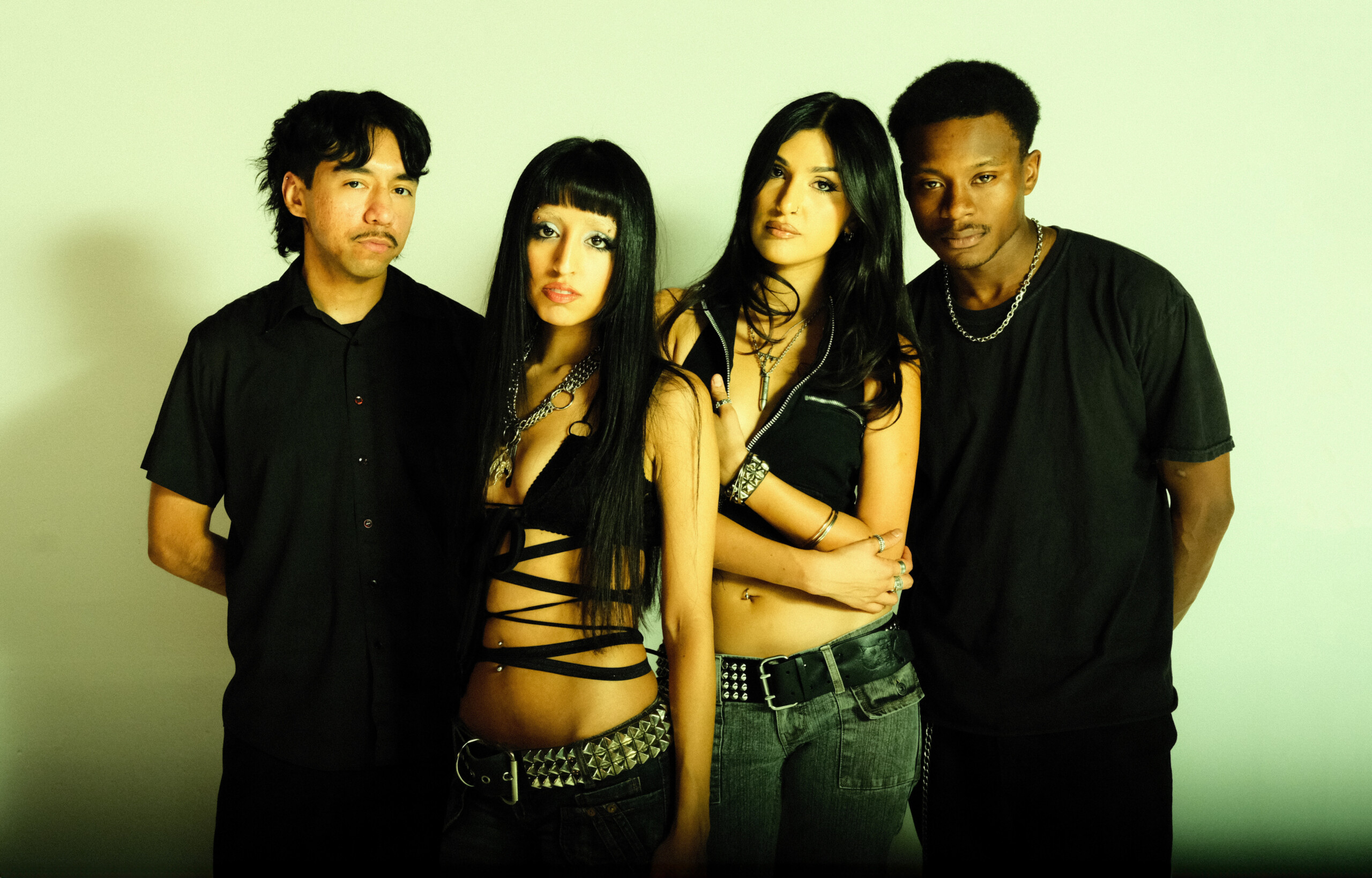
Two recent solo debuts from guitarist Michael Kaiser run counter to the contemporary approach of bombarding the music scene with albums, product, content and social media posts. The dual release of Realms and Night Realms are akin to striking a primal urgrund-note on a squealing electric guitar, letting it resonate through life/death for three decades, and returning for the secondary strum.
Neutrality is the arguably goal with any critical writing. Removing the “I” from any story lets the reader take on all supporting roles and direct their own narrative. But for the sake of full disclosure I surely have some kind of skin in the game with Kaiser; or at least personal and artistic history.
Circa 1989 while still in our late teens/early twenties, Kaiser, Rob Armstrong and myself routinely turned my hapless parents’ garage in Jacksonville Beach into smoke set to one key: invariably a really loud “E” chord forged through guitar, bass, drums and sheets of metal. While SUNN O))) now notoriously tune their guitars down to C# from maximum sonic wooziness, Kaiser was the first musician I met who would routinely tune his trusty Guild or Aria Pro II guitars down to a gullet-loosening low “A”— deep below the standard “E tuning.” He was also the first guitarist I knew who had his tube amps modified — in this case by local gear wizard Bill Ferris so the teenaged Kaiser could achieve barely-controllable Blue Cheer-level distortion.
In 1992, Kaiser dropped out of college where he was studying photography and joined Royal Trux as second guitarist. After having Neil Hagerty and Jennifer Herrema crash at his house following an Orlando gig, Kaiser literally “got in the van.” From 1992-1994, he toured and recorded with Royal Trux, including shows with Mudhoney, the Laughing Hyenas and the ’93 Lollapalooza. His recorded output with the band includes a BBC John Peel session and perhaps the band’s most-generally lauded release: 1993’s Cats and Dogs.
Kaiser’s collaboration and association with Hagerty and Herrema also became a de facto portal for other locals to be hired on as Trux side-players: from 1994-2000, Jacksonville Beach musicians including Robert Armstrong, Chris Pyle, Ken Nasta, Timothy McClain and myself intermittently toured or recorded with Royal Trux.

Considering that Kaiser’s tenure with Trux was when they were still a relative “secret handshake” albeit-adored band, his move to go “off radar” was one of moving from obscurity to an indifference to rock music altogether. In 1999, Kaiser played bass with locals Jon Todd on a split vinyl 10” release with Fin Fang Foom (Stripmine Recordings). The sessions were engineered and mixed by Martin Bisi, the NYC-based producer who had worked with Sonic Youth, Herbie Hancock, John Zorn and Swans, among others. Then Kaiser stepped away from the indie scene entirely. He was pulled into the mother-tongue of drone music, devoting years to studying Indian music, including intensive private lessons on the vina (Carnatic) and self-study of sitar (Hindustani Classical).
All of that history is valid as it is the momentum and certain volition in the arrival of the Realms albums.
Realms is essentially one sustained piece, created with electric guitar and granular synthesizer. In lieu of the longer recording rates of a traditional sampler, a granular synthesizer captures micro-samples or “grains”—which are generally five-to-200 milliseconds long, which can then be utilized to synthesize new sounds. Iannis Xenakis created granular synthesis with his 1959 piece Analogique A-B, a frantic call-and-response between analog tone generators, tape splicing, and orchestra. The second track from Realms is entitled “The Celestial” and is a Xenakis at .25-playback speed: a 10-minute sonic-thread of overtones and guitar glissandos ricocheting off ghost planets.
The counterpoint to Realms both sonically and aesthetically, Night Realms is the sludge-rich chimera to its sibling album. Layered over dense guitar samples, the album highlights Kaiser completely improvising with an alternate tuning he was wholly unfamiliar with: (D-A-D-F-A-E). Whether through default or design the guitar is open-tuned to the Dorian Mode – the same set of tones that gave us Miles Davis’s “So What” and the Allman Brothers Band “In Memory of Elizabeth Reed.” But you won’t find similar movement in the glacial lurch of Night Realms. Album closer “Oblivion” is a seven-minute rumination that resembles a single massive chord collapsing on itself, slowly, the gleam of “The Celestial” now tempered into a gray cascade of feedback.
On principle, Kaiser is a rightful product of his generation’s underground influences: the rabid guitar throttling of mid-80’s Sonic Youth and Pussy Galore that pointed ardent seekers back to NYC No Wave guitar magi like Glenn Branca and Rhys Chatham, then further still to the 1960s work of La Monte Young and Marian Zazeela. Yet, Kaiser was also skull-deep in the crucial underground metal and grindcore scenes of the late ‘80s. The guitar lava on Night Realms arguably owes as much to Carcass and Godflesh as it does Elliot Sharp.
Whether it be drone, minimalism, ambient or even Indian music, the static forms that Kaiser deals in can either be heard as a beckoning invitation or have the effect of being foot-braked by its inherent sameness. Realms and Night Realms are hardly party albums; unless you want to slow down the company mixer to 16 BPM. But like the aforementioned genres, Kaiser’s albums aren’t out to convert anyone. You adhere to the sound or simply do not.
Will we wait another 25 years for Kaiser to spring another album on us? Hopefully not. While we wait, more adventurous listeners with patient ears would do well to dip into the dual Realms albums. They are long-overdue music from an under-acknowledged and semi-obscure artist from whatever music underground that calls Northeast Florida home.

Mr. Al Pete and Notsucal Release Their Latest Collab, ‘G4.5’

Dinner Party, Tom Misch and More from the Neighborhood with Mr. Al Pete

An Ultra-Chill Playlist from the Latest Episode of Electro Lounge

Sing Out Loud Festival Returns With Hozier, Beabadoobee, Father John Misty, Vance Joy and More

Chicago Alt-Country Faves Wilco Return to St. Augustine with Indie-Folk Great Waxahatchee

Looking for an Alternative to Spotify? Consider Hopping on the band(camp) Wagon

Khruangbin to Bring ‘A LA SALA’ Tour to St. Augustine in April

Perfume Genius, Flipturn, Tamino + Mitski and 6 New Songs to Stream

Song of the Day | “all tied up” by Glixen




